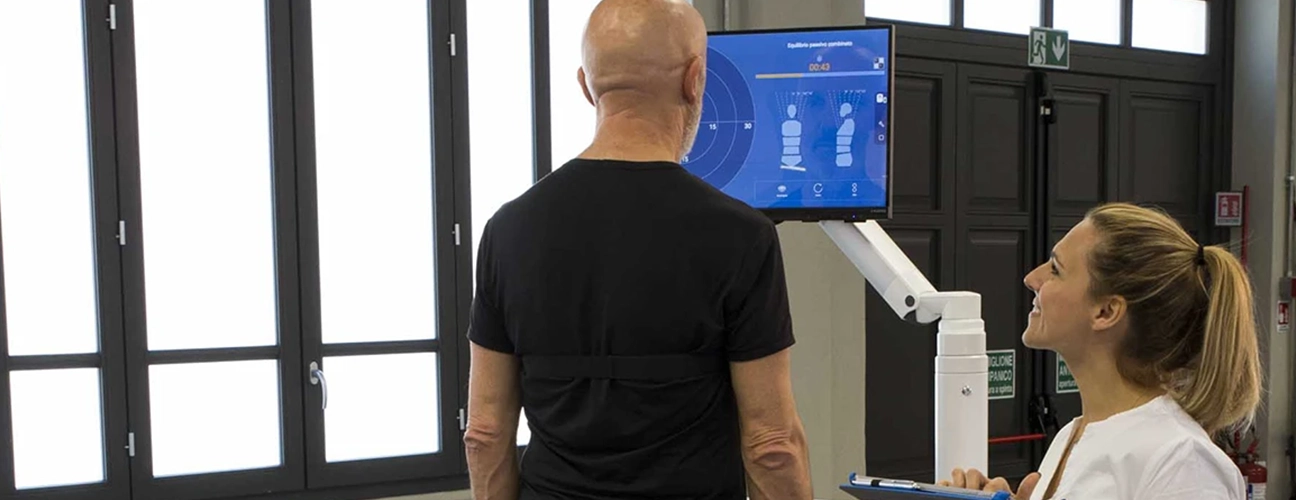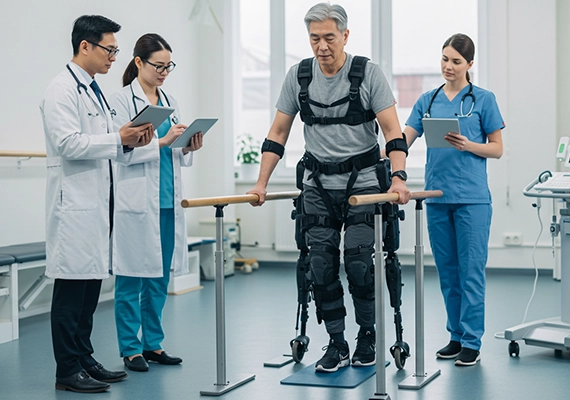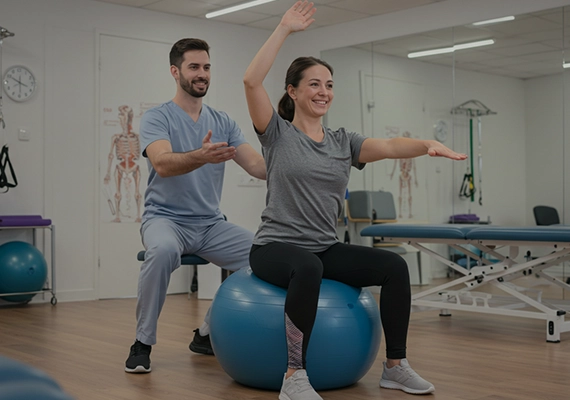Movendo hunova: Revolutionizing Rehabilitation through Objective Data and Personalized Therapy
Movendo hunova is a cutting-edge robotic system designed to transform the landscape of rehabilitation for individuals with a wide range of neurological and musculoskeletal conditions. By providing precise, objective assessments and delivering highly personalized, robot-assisted therapy, hunova empowers both patients and clinicians to achieve better outcomes.

Assessment Indexes and Rehabilitation Soluions:

SILVER INDEX:
The silver index provides a controlled simulation of the external risk factors that cause falls, by stimulating the various mechanisms on which balanced is based, it also, enables the selective measurement of the various types of impairment to allow clinicians to customize rehabilitation therapy.

PERFORMANCE INDEX:
The performance index is a total-body assessment tool that summarizes a patient’s performance in a comprehensive report, making it an ideal solution for both amateur and professional athletes looking to enhance their performance, by comparing their progress with that of high-performers, to obtain better results.

KNEE INDEX:
The knee index is an assessment index developed for individuals with a knee condition or who undergo knee surgery.It allows therapists to plan optimum individualized rehabilitation with a pathway developed to suit the patient’s needs.

TBI INDEX:
The TBI index is designed to assist young, elderly, and athletes who have experienced a traumatic brain injury, offering a comprehensive assessment that integrates clinical parameters with robotic data, suggesting personalized and targeted treatment.
How hunova Enhances Rehabilitation:
|
Objective and Comprehensive Assessment: hunova's sensorized platform meticulously measures a patient's movement capabilities, balance, posture, and force production. This data-driven approach provides a clear baseline, quantifies progress over time, and identifies specific areas of impairment with unparalleled accuracy. This eliminates subjective evaluations and ensures therapy is tailored to individual needs. |
Personalized and Adaptive Therapy Programs: Based on the detailed assessment, therapists can design highly customized rehabilitation exercises using hunova's intuitive software. The robotic system can guide patients through specific movements, providing adjustable levels of assistance or resistance. Real-time feedback on performance allows for immediate adjustments, optimizing the effectiveness of each session and adapting to the patient's evolving abilities. |
|
Training for Specific Impairments: hunova offers a diverse range of exercises and protocols specifically designed to address key rehabilitation goals, including balance, strength, range of motion, and coordination. |
Enhanced Patient Engagement and Motivation: hunova's interactive interface and real-time performance feedback can significantly increase patient engagement and motivation. Seeing objective progress and participating in engaging exercises can foster a greater commitment to the rehabilitation process. |
|
Data-Driven Progress Tracking and Outcome Measurement: hunova automatically records and analyzes patient performance data, providing therapists with objective metrics to track progress, adjust treatment plans, and demonstrate the effectiveness of the rehabilitation program. This data also supports informed clinical decision-making and facilitates communication with patients and other healthcare providers. |
Safe and Controlled Environment for Exercise: The robotic assistance provided by hunova allows patients to perform exercises safely, even with significant weakness or instability. This controlled environment enables them to challenge themselves appropriately and progress at their own pace, reducing the risk of injury. |
Applications of Movendo hunova:

Neurological Rehabilitation:
- Stroke Recovery:Improving motor function, balance, and coordination in hemiplegia and other post-stroke impairments.
- Multiple Sclerosis (MS): Addressing balance deficits, muscle weakness, and fatigue.
- Parkinson's Disease: Enhancing postural stability, gait, and reducing bradykinesia.
- Spinal Cord Injury: Assisting with motor recovery, balance training, and functional strengthening (depending on the level and completeness of the injury).
- Traumatic Brain Injury (TBI):Improving motor control, coordination, and balance deficits.
- Cerebral Palsy: Supporting motor skill development and improving functional movement.

Musculoskeletal Rehabilitation:
- Post-Surgical Rehabilitation (e.g., joint replacement):Post-Surgical Rehabilitation (e.g., joint replacement):
- Sports Injuries:Facilitating recovery from ligament sprains, muscle strains, and other sports-related injuries.
- Chronic Pain Management: Improving movement patterns and reducing pain associated with musculoskeletal conditions.
- Balance and Fall Prevention:Assessing and training balance in elderly individuals or those at risk of falls.
- Lower Limb and Trunk Weakness:Strengthening exercises for various musculoskeletal conditions.
